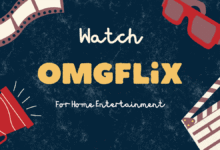The Art and Fun of Pun Names: A Deep Dive Into Wordplay

Discover the playful world of pun names! Learn how these clever wordplays make stories, brands, and characters unforgettable. Includes examples, tips, FAQs, and more!
What Are Pun Names and Why Do We Love Them?
Pun names are clever plays on words that sound like real names but have humorous or double meanings when spoken aloud. They often rely on homophones, wordplay, or unexpected combinations of sounds. Whether it’s a character in a sitcom named “Anita Bath” or a cheeky business called “Curl Up and Dye,” itmake language fun.
These witty word combinations have been a part of humor and storytelling for centuries. From Shakespeare to Saturday morning cartoons, this are everywhere. They grab attention, spark curiosity, and most importantly, make people smile. The charm of this lies in their simplicity and surprise. They make you stop, think for a second, and then laugh.
The Psychology Behind Pun Names
Why do pun names appeal to us so much? Part of the answer lies in how our brains process language. When we hear a pun name, we experience a kind of mini “aha” moment. Our brains enjoy the challenge of figuring out a joke, and when the light bulb goes on, it releases a little dopamine—the feel-good chemical.
it also tap into our love for wordplay and novelty. In a world flooded with information, something clever and different stands out. A funny name makes a business memorable. A punny character name adds charm to a story. That emotional engagement helps us form connections, which is why pun names are such a powerful tool in branding, writing, and entertainment.
Pun Names in Pop Culture
From movies to memes, it have earned their place in pop culture. Think of James Bond’s cheeky villain names like “Pussy Galore” or the classic cartoons where every animal has a punny name that hints at their personality. Shows like “The Simpsons” and “Family Guy” thrive on this kind of humor.
Even in books, it serve a critical purpose. J.K. Rowling gave us names like “Remus Lupin” (lupin = wolf) to hint at character traits. Dr. Seuss loved pun-based characters that added a rhythmic, playful element to his stories. Pun names aren’t just jokes—they’re clues, character hints, and comic relief all rolled into one.
Types of Pun Names
Pun names come in various flavors, each with its own twist on the art of wordplay. Let’s break down some of the most common types:
Homophonic Pun Names
These names sound like something else when spoken aloud. For instance, “Al Beback” (I’ll be back) or “Sue Flay” (soufflé). The pun lies in the auditory confusion and double meaning.
Homophonic puns are often used in cartoons and sketch comedy. They’re especially popular in visual gags where hearing the name adds to the humor. The beauty of these pun names is that they don’t need to be written to be funny—they’re built for oral storytelling and performance.
Visual Pun Names
Visual pun names are designed to be read and appreciated in written form. A good example would be “Claire Voyant” or “Justin Time.” These names rely on your brain to make the connection between the name and its punny meaning.
They are perfect for books, comics, or digital content where visual language rules. Cleverly crafted visual puns are a delight for readers, offering an extra layer of wit that invites a second look or reread.
Contextual Pun Names
These names rely on situational humor or cultural references. A food truck named “Grillenium Falcon” taps into pop culture and pun-lovers all at once. Or a coffee shop named “Brewed Awakening.”
Contextual pun names often go viral because they blend relatability with wit. They make people want to take a photo and share it online. That’s marketing gold and a testament to the power of a good pun.
Pun Names in Branding and Business

A catchy pun name can make or break a business. Whether it’s a salon called “The Hair Lair” or a law firm (fictional, of course) called “Dewey, Cheatem & Howe,” pun names are unforgettable. They create immediate associations and add personality to a brand.
Humor helps businesses seem friendly and approachable. A well-chosen pun name says, “Hey, we don’t take ourselves too seriously, and we’re fun to work with.” That’s an inviting message in almost any industry.
Even restaurants and bars get in on the act. “Nacho Daddy,” “Pita Pan,” or “Lord of the Fries” all use pun names to hint at their offerings while entertaining you. It’s smart branding and effective advertising rolled into one.
Crafting the Perfect Pun Name
Creating the ideal pun name takes more than just throwing words together. It requires wit, a solid grasp of language, and a keen sense of timing. Start by brainstorming themes related to your subject or business. Think about rhyming words, homophones, or cultural references.
For example, if you’re opening a bakery, think about words like “bread,” “dough,” “rise,” or “roll.” Combine those with playful first names or phrases: “Roll With It,” “The Yeast You Can Do,” or “Dough Re Mi.” Get creative, and don’t be afraid to get silly.
Always say the name out loud. Does it roll off the tongue? Is the pun clear enough to be funny but subtle enough to feel clever? Run it by a few friends for a test laugh. If they smile, you’re on the right track.
Famous Examples of Pun Names
Let’s celebrate some iconic pun names that have made us laugh over the years. Here are a few favorites across different mediums:
| Name | Pun Meaning | Context |
|---|---|---|
| Anita Bath | “I need a bath” | Sitcoms and sketches |
| Justin Time | “Just in time” | Cartoon characters, apps |
| Al Beback | “I’ll be back” | Sci-fi spoofs |
| Drew Peacock | Sounds like something cheeky | Used in adult comedy |
| Pita Pan | Play on Peter Pan and pita bread | Restaurant name |
| Brock Lee | Broccoli | Food mascots |
These pun names tickle our brains and make an impression. They get repeated, remembered, and shared—which is all you can ask for from a name.
The Cultural Impact of Pun Names
Pun names transcend language barriers, though they often work best in their native tongue. They’re a form of linguistic creativity that connects people through laughter. In some cultures, pun names are tied to festivals, holidays, or traditions.
For example, in Japanese, wordplay (known as “dajare”) is a cherished form of humor. Businesses and mascots often use puns to appeal to all ages. In the West, puns are more common in media and branding but are just as loved.
They become cultural touchstones. Think of how many times you’ve heard a character like “Rick O’Shea” or “Barry Cuda” and remembered it. That staying power makes pun names a powerful storytelling and marketing device.
Pun Names in Writing and Storytelling
Writers often use pun names to reveal something about their characters or setting. A grumpy gardener might be called “Willie Weeds.” A sweet candy maker might go by “Connie Fects.” These names do more than make you laugh—they paint a picture.
In children’s literature, pun names are almost a staple. They add layers of fun and keep readers engaged. Even in serious stories, a well-timed pun can offer comic relief or serve as a memorable detail.
Names are powerful in fiction. They shape reader expectations and can even foreshadow plot points. A pun name can be a subtle wink from the writer to the audience.
The Do’s and Don’ts of Pun Names

While pun names are fun, they require finesse. Here are some do’s and don’ts to keep your wordplay on point:
Do:
- Keep it relevant to the theme
- Ensure it’s easy to pronounce and understand
- Make it clever, not crude (unless that’s the goal)
- Test it with others before going public
Don’t:
- Force the pun; it should feel natural
- Use inside jokes only a few will get
- Overcomplicate the wordplay
- Ignore your audience’s cultural sensitivity
A pun name should enhance your brand or story, not distract or confuse. The best puns walk the line between funny and functional.
Why Pun Names Go Viral
Pun names have built-in viral potential. People love to share something funny, especially if it’s clever. A restaurant with a punny name is more likely to end up on social media. A book character with a cheeky name might trend on Twitter.
That shareability is pure gold. With the right mix of humor and relatability, a pun name can catch fire online. Memes, hashtags, even merchandise—all it takes is one clever name to start a trend.
Quote:
“A good pun is its own reword.”
FAQs
Q: What is a pun name?
A: A pun name is a play on words that sounds like a real name but has a humorous or double meaning, often relying on homophones or wordplay.
Q: Where are pun names used most often?
A: Pun names are popular in entertainment, branding, children’s books, and business names due to their humorous and memorable nature.
Q: Are pun names appropriate for professional businesses?
A: Yes, but it depends on the industry. Fun, customer-facing businesses can benefit from a pun name, while more formal sectors might want to use them cautiously.
Q: How do I create a good pun name?
A: Start with relevant themes, brainstorm rhyming or similar-sounding words, and test your ideas aloud. Keep it clear, clever, and appropriate for your audience.
Q: Do pun names work in all languages?
A: Pun names are language-dependent but exist globally. Each language has its version of wordplay, and pun names are a universal source of humor.
Conclusion
Pun names may be lighthearted, but they pack a punch. Whether you’re writing a novel, starting a business, or just trying to make someone laugh, a pun name can be your secret weapon. They’re smart, memorable, and most importantly, they make people feel something.
So the next time you hear a name that makes you smile, tip your hat to the clever mind behind it. After all, in a world that takes itself a bit too seriously, pun names are a breath of fresh, funny air.





